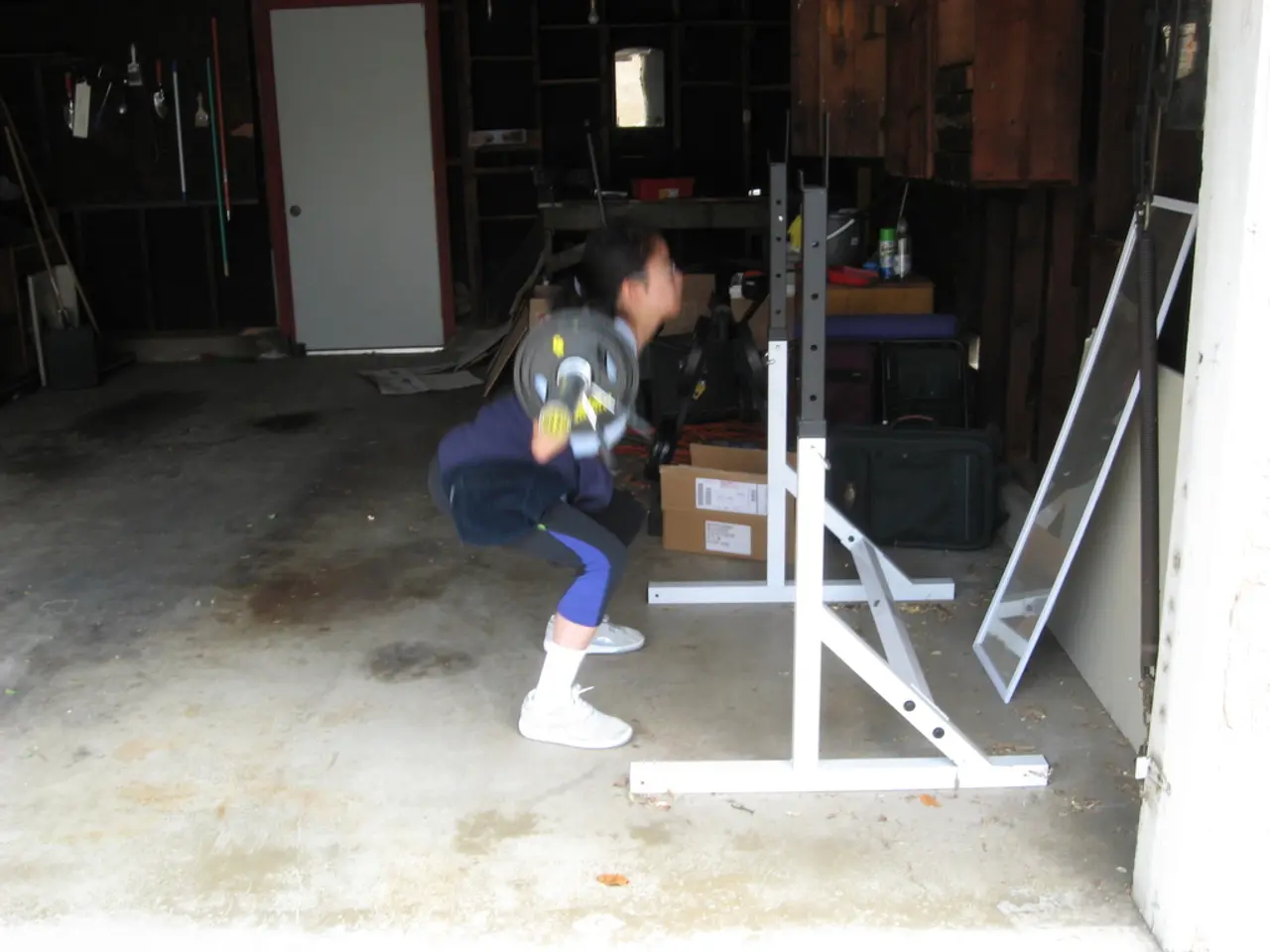Essential home workouts for runners, as suggested by a physical therapist
===========================================================
Runners, it's time to boost your performance and reduce injury risk with functional strength training. Physical therapist Adrian D'Costa emphasises the importance of this approach for runners, focusing on exercises such as squats, deadlifts, and calf raises.
Why these exercises?
Squats, Deadlifts, and Calf Raises
These exercises are beneficial for runners as they strengthen and lengthen the hamstrings, bolster the quadriceps muscles on the front of the thighs, and develop strength and resilience in the lower legs.
Romanian Deadlifts
To perform Romanian deadlifts, stand tall with feet hip-width apart, hinge forward at hips, lower weights down the front of thighs, and drive hips forward to stand tall, keeping back flat and core engaged.
Goblet Squats
Goblet squats are performed by cuping the head of a dumbbell in both hands, holding it close to your chest, sitting your bum back to lower into a squat, and pushing through heels to return to standing, keeping back flat and core engaged throughout.
Calf Raises
Perform calf raises with bodyweight, gradually adding a step or external load with time.
Core Training
A strong core is essential for runners. To prevent injuries and enhance running form, core training should accompany leg strengthening exercises. Exercises such as planks, anti-rotational moves, and dynamic core work are recommended.
When to Train
Timing is Key
When adding strength work to running training, timing is crucial. In a perfect scenario, lay foundations of strength before the main running block to avoid overwhelming the muscles and nervous system. Adjustments should be made closer to race day to avoid extra fatigue and allow for a smooth taper.
Frequency
Strength training for runners is generally advised 2 to 3 times per week, spaced to allow recovery and minimise interference with running volume and intensity. These sessions can be integrated on non-running or easy running days to maintain balance.
A sample weekly plan could be:
| Day | Activity | |----------------|---------------------------------| | Monday | Easy run + Squats, deadlifts, calf raises (3-4 sets of 8-12 reps) | | Wednesday | Moderate run + Core workout | | Friday | Easy run + Squats, deadlifts, calf raises | | Weekend | Long run + mobility/active recovery |
By following this balanced approach, you can build functional strength critical for running without overloading the system, reducing injury risk, and improving performance.
In Summary
Incorporate squats, deadlifts (preferably single-leg variations for stability), and calf raises into your strength training 2-3 times per week, with 3-4 sets of 8-12 reps, combined with core-focused workouts for optimal functional strength for runners. With consistency and progression, you'll be on your way to a stronger, more injury-resistant running routine.
[1] D'Costa, A. (2021). Functional strength training for runners. Runners World.
[2] D'Costa, A. (2020). Strength training for runners: A comprehensive guide. PodiumRunner.
[3] D'Costa, A. (2019). Core training for runners: Essential exercises for injury prevention and improved performance. Competitor.
[4] D'Costa, A. (2018). The role of single-leg deadlifts in running injury prevention and performance enhancement. Running Times.
[5] D'Costa, A. (2017). Calf raises: The often-overlooked exercise for runners. Runner's World.
- For runners, incorporating strength training exercises like squats, deadlifts, calf raises, and core training into their fitness-and-exercise routine can improve performance and reduce injury risk, as explained by physical therapist Adrian D'Costa.
- Science backed evidence shows that strengthening and lengthening the hamstrings, bolstering the quadriceps, and developing strength and resilience in the lower legs through exercises like Romanian deadlifts and grip-held goblet squats contribute significantly to the health-and-wellness of runners.
- To optimize the benefits from functional strength training, sports performance and recovery specialists suggest that runners train with 2 to 3 sessions of strength work per week, Timing is key, and these sessions should be spaced to allow recovery and minimize interference with running volume and intensity.






